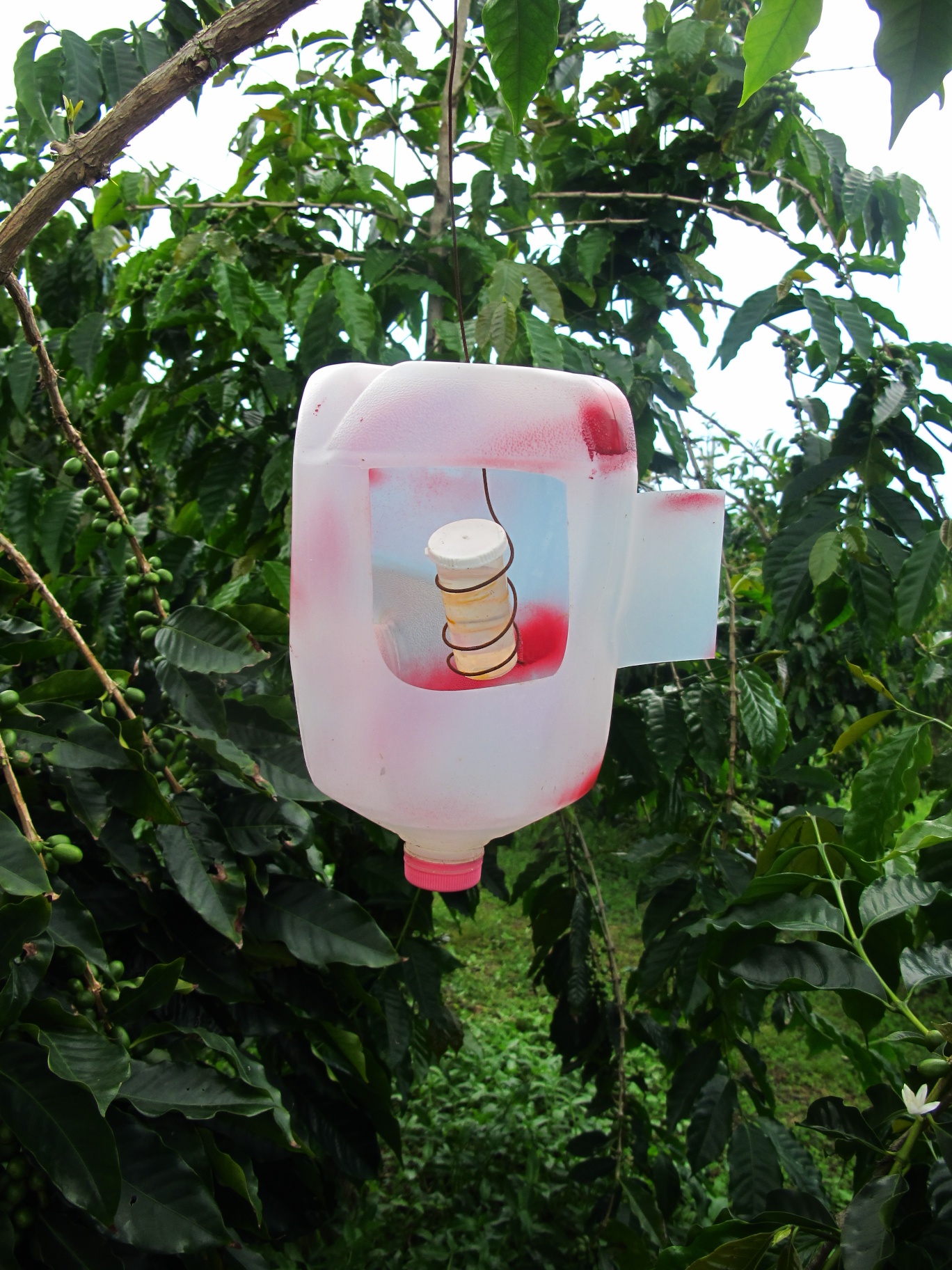In August of 2012 in Kona I found out about resent natural events that are at play right now causing the Kona Coffee plantations to struggle. The problem is a beetle 1.4-1.7mm (1/16th) of an inch called the Coffee Berry Borer Hypothenemus hampei (Ferrari). They where first reported according to the State of Hawai'i Department of Agriculture on September 2, 2010 and now devastating the entire region. The CBB is native to Central Africa and can now be found in every coffee-production region, with the exception of Nepal and Papua New Guinea. Vega, F.E., F. Infante, A. Castillo, and J. Jaramillo. 2009. The coffee berry borer Hypothenemus hampei (Ferrari) (Coleoptera: Curculionidae): a short review, with recent findings and future research direction. Terrestrial Arthropod reviews 2. 129-147.
The coffee pest burrows in the berry to lay its eggs. Photo courtesy of P. Greb
“For every 1.8 degrees Fahrenheit temperature increase, the coffee borer is 8.5 percent more infectious!” Meg Lowman is an N.C. State University professor and forest canopy expert who directs the Nature Research Center, N.C. Museum of Natural Sciences.
Traveling through plantations, farms and mills I am find out that some plantations have no Coffee Berry Borer all the way up to 50% or more. Most are reporting about their 2011 season do to they will not know till they mill and roast for the 2012 season.
Talking to Downes Ground Coffee, the owner says " I do have the CBB and that he has it under control."
"As of today, there are no places in Kona that are not infested with the coffee berry borer beetle, however, through regulation and help of the community, North and East Hawaii are not infested, yet, that I know of," Kawabata said. The beetle, also does not appear to discriminate between elevation as it is found at farms ranging from the 600-foot elevation to the 2,200-foot elevation. According to Kawabata
On the Department of Agriculture in Hawaii they posted this information.
"Staff from the U.S. Department of Agriculture (USDA) and the Hawai`i Department of Agriculture (HDOA) have been conducting systematic surveys of coffee farms across the state to determine the extent of the Coffee Berry Borer (CBB) infestation. This survey information is critical to determine the best methods of prevention, eradication and control of CBB in infested and non-infested areas."
"As of May 11, 2011 - CBB has only been confirmed on Hawai`i Island."
The following is survey data as of May 11, 2010:
Total number of farms surveyed statewide 130
# surveyed on Hawai`i Island 81
# positive for CBB in the primary quarantine zone (Kona) - 31
# positive for CBB in secondary quarantine zone (Pahala) - 1
# surveyed on O`ahu (no positives) 7
# surveyed on Maui (no positives) 36
# surveyed on Kaua`i (no positives) 2
# surveyed on Moloka`i (no positives) 1
# surveyed on Lana`i (no positives) 3
"NOTE: The data in the table above only reflects the number of farms that have been officially surveyed, sampled and examined by USDA and HDOA. Many Hawai`i coffee growers are cooperating by sending coffee bean samples from their farms to HDOA. The samples submitted by growers help USDA and HDOA in prioritizing areas where official surveys should be conducted. Samples sent in by growers are not included in the table above."
http://hawaii.gov/hdoa/pi/ppc/coffee-berry-borer-folder/cbb-survey-status-report
With the out break of this beetle plantation owners, farms and mills are trying ways to slow down the beetle and eradicate it also. Most plantations are using a mix of Methyl and Ethyl of 40/60 percent as a way to monitor the beetle. At Mountain Thunder, they are spraying on their Hōlualoa farm the first of every month using botanical guard along with using other organic methods such as Garlic, Chrysanthemum Extract, and Bacteria's. They also use a surfactant that they spray two weeks after the coffee flowers to open the pores of the trees leafs. All of these techniques they are using are made available to the local plantations, farms and mills also all in hope to stop this beetle.


